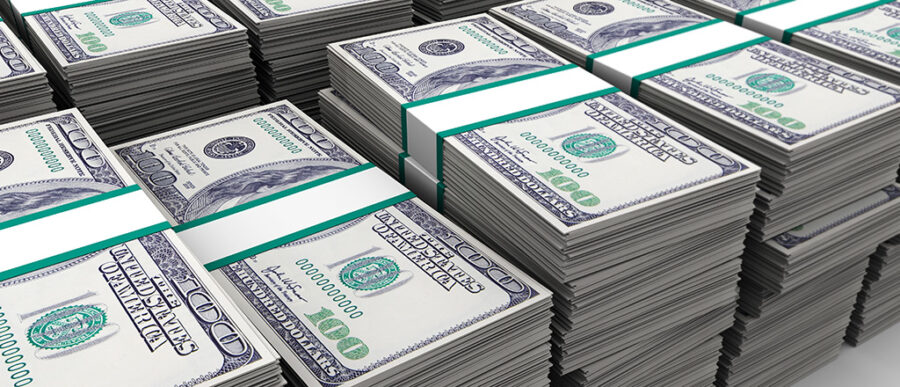Interest rates in the U.S. are likely to stay at current low levels at least until June, as the Federal Reserve adopts a wait-and-watch attitude with inflation and job growth at home and stimulus programs in Europe. That is the assessment of Wharton finance professor Krista Schwarz after digesting the Federal Reserve’s latest statement.
“A realistic goal [for an interest rate increase] is later in the year than June; it clearly isn’t going to come before June,” said Schwarz. “My own expectation is that headline inflation (a measure of the total inflation within an economy) will drop further and perhaps go negative in the next few months. That, to some extent, ties [the Fed’s] hand in raising rates.” Schwarz elaborated on that against the backdrop of trending U.S. economic indicators and the imminent rollout of quantitative easing (QE) by the European Central Bank on the Knowledge at Wharton show on Wharton Business Radio on SiriusXM channel 111. (Listen to the podcast at the top of this page.)
Be Patient
In its latest statement, the Federal Reserve noted that economic activity has been expanding “at a solid pace.” The release also pointed to improvements in labor market conditions, household spending and business fixed investment. Thanks to falling oil prices, the inflation rate (now at 0.8%) is trending below its longer-run goal of 2%, but recovery in the housing sector remains slow. In keeping with the Fed’s mandate of “maximum employment and price stability,” the agency said it would retain the federal funds rate at the current target range of zero to 0.25%. In an indication of where it is headed, the Fed said it “can be patient” in normalizing its monetary policy stance.
“The word ‘patience’ … effectively means no more rate increases for at least two more meetings, which puts us at June,” said Schwarz. “Other than the fact that [the release] continued to have the word patience in it, it was a little more hawkish than I thought it would be.” The Fed had talked of such patience in its previous statement as well.
“Other than the fact that it continued to have the word patience in it, [the Fed’s statement] was a little more hawkish than I thought it would be.”
Schwarz agreed with the Fed’s view that the inflation rate could fall further. “It’s entirely possible, with oil prices being as low as they are, and the lag that it takes to feed through into gasoline prices and consumers, that headline inflation could be even negative in coming months,” she said.
Flexibility and Consensus-building
The Fed, however, expected the inflation rate to rise gradually toward 2% “as the labor market improves further and the transitory effects of lower energy prices and other factors dissipate.” Schwarz read in that a hint from the Fed that an interest rate increase could occur as early as June. Even so, she cautioned that Fed chair Janet Yellen may be “leaving herself some room for flexibility,” or that she needs time to build a consensus among divergent views of Federal Open Market Committee members.
“Market participants are not pricing in a hike until the end of the year,” Schwarz noted. “Fed funds futures contracts and other market-based measures of expectations suggest that it might be further out, such as September, December or [possibly] early next year.”
Schwarz said the Fed’s next objective is to start “unwinding its balance sheet.” After the Federal Reserve began its quantitative easing program of asset purchases in November 2008 as a response to the financial market crisis, its portfolio of securities has swollen from about $800 million to $4.5 trillion currently, she noted. Now, in what Schwarz described as a “post-QE world” or “QE extension,” she said that the Fed is not allowing its “extraordinarily large” portfolio to mature and run off. Instead, it plans to reinvest principal payments from its holdings of securities to “help maintain accommodative financial conditions.”
“Market participants are not pricing in a hike until the end of the year.”
Impact of Quantitative Easing
External factors will also weigh in, chiefly the European Central Bank’s QE program that is expected to begin in March with 50 billion euros of asset purchases, increasing to a trillion euros by the end of 2016. Schwarz expects that program to have a positive effect on the eurozone and growth there. The U.S., too, will benefit from that QE program with growth in the eurozone, even after considering the negative fallout of a stronger dollar, she said. For one, it will lead to increased demand for imports from the U.S.
In looking at job growth as a factor that the Fed will consider, Schwarz said that falling unemployment claims and strong employment gains do lift the cheer. However, she felt that poor wage growth and a decline in the labor-force participation rate to about 62% from earlier levels of 67% were worrisome. She agreed that many in the baby boomer generation may have decided to quit working or work part-time, and that expectations of returning to previous levels of labor-force participation may be misplaced. “Maybe a new normal” has arrived, she added.



